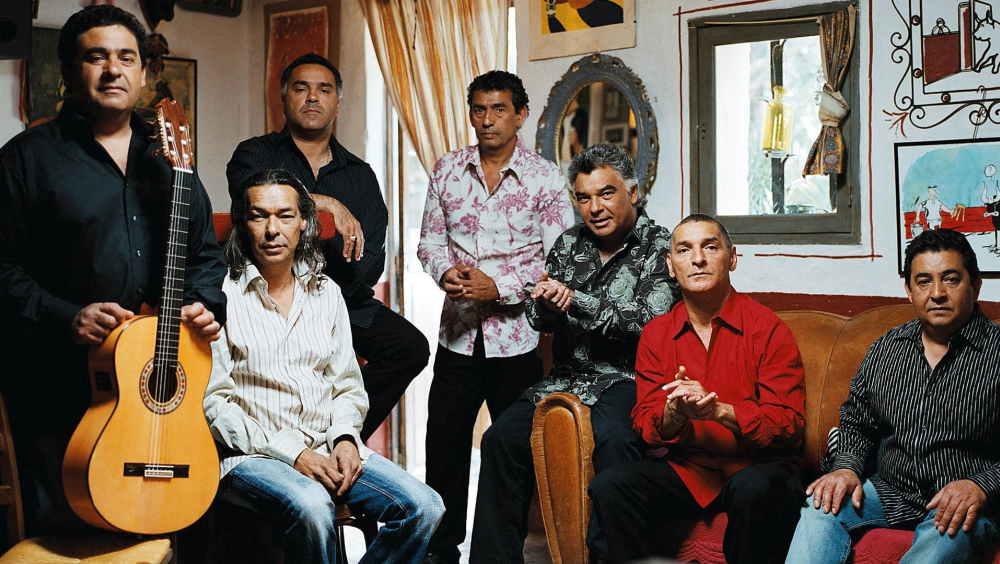Flamenco is not (only) a Spanish music and dance
Flamenco is not Spanish sensu stricto, or exclusively Spanish; or at least it's not“Spanish” in the sense in which we use this word on a daily basis: “Spanish” as a closed system that generates a feeling of belonging for those who have the privilege of being able to designate themselves as Spaniards, and as something that generates borders, as well as dynamics of inclusion and exclusion both in a geopolitical sense and in an identity and even aesthetic sense.
Flamenco is Spanish only if we understand “Spanish" as a culture that takes part of the circulation and transit inherent to any human phenomenon.
The objective of this new cultural cartography is not to make us feel "less Spanish", but rather to understand "our" culture from a prism that is closer to the truth, understanding it as inevitably linked to a movement of permanent transformation and practices of constant exchange of knowledge and practices, as well as interdependence between cultural agents, both neighboring and distant.
For this reason, talking about flamenco through non-Spanish artists, beyond the Iberian Peninsula and beyond the Castilian language, allows us to find other objects and cultural dynamics that teach us to desire diversity and to identify with it, abandoning a model of thought that conceives identity from the parameters of "purity", as if it had ever existed and as if it were prior, temporarily, to any mixture. Regarding purity in flamenco, the historian Ortiz Nuevo reminds us:
“The roots that nourish the tree contribute to the sap the echo of the people of Tarteso, who wrote their laws in verses, and the delicate lasciviousness of the dancers of Gades [ancient Roman name for Cádiz], and the cry of the dead victims in the crosses when the Romans were in power and the hymns that in Cádiz were sung to death, and the tears and joy of Andalusian lyric and the rhythm of popular music, and synagogal and muezzin chants and Gregorian chants, and the furious tremors of the blacks of Africa, and the zarabandas and chaconas and seguidillas from La Mancha, and jarchas and romances, and bolero dances, and wine or brandy and festivities and open nights...
Tell me then: please! Can you tell me where the purity is?” *
My intuition that culture, like life, can only be understood from the dynamics of dissemination, is here formulated in terms of a "transnational history of culture" through the analysis of very small elements (an object, a dance, a gesture, a word, a melody, etc.) that often connect us with the global scope:
“Indeed, one of the specificities of the term "transnational history" is due to the more modest dimension of its approach. Although "global" history and world history, regardless of the differences between these two terms, would more or less imply a willingness to embrace the whole Earth, transnational history (as well as connected history) merely highlight the fact that any historical phenomenon is inextricably linked to phenomena that are not necessarily contained within conventional political boundaries, borders that, however, constitute the usual research framework of historians. This approach not only seeks to show the way in which very specific phenomena can be the result of sequences that can come from very distant environments, but also seeks to show the heuristic potential of a given subject, to mislead his own analysis, confronting him with the test. of the different or the distant.” **
These reflections are what have allowed me to begin to understand flamenco as a universe and not as a “little world”, beyond the notions of aesthetic, ethnic, regional and national identity, and understanding that in an infinite space it makes no sense to pose border issues of any kind.
*José Luis Ortiz Nuevo. Alegato contra la pureza, p. 27.
** “Introduction” in ZÚÑIGA, Jean-Paul (Dir.), Pratiques du transnational. Terrains, preuves, limites, La Bibliothèque du Centre de recherches historiques, 2011, p. 12. URL: https://hal.archives-ouvertes.fr/hal-00650024
We will explain all the scenographic, choreographic and musical elements that are part of what is currently called "traditional flamenco" but that come from different artistic styles and, above all, from other nations.
We will focus on elements that came from France, Portugal and Italy in the 19th and 20th Century, such as the "bata de cola" (a type of dress imitating a French-style wedding dress), the novel-opera "Carmen" by Merimée-Bizet, the dance of "El Garrotín" (circa 1905), the rumba (circa 1950), a musical style practiced on both sides of the Pyrenean border, and the Portuguese flamenco tangos.
